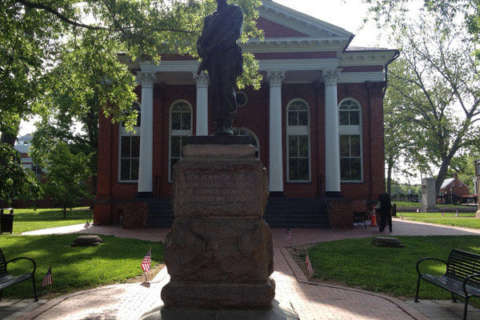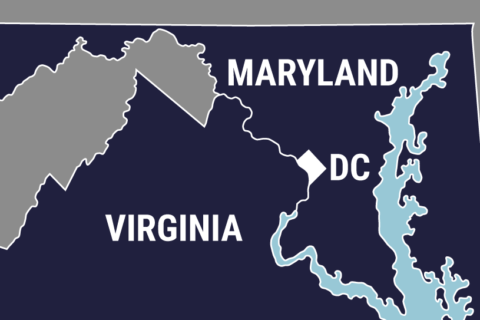NOW: DC's Albert Pike draped in #ModernConfederates
— Anthony Torres (@avtorres4) August 18, 2017
Bannon not the only upholder of white supremacy; whole Admin is guilty #ImpeachOrResign pic.twitter.com/4LE55rd17M
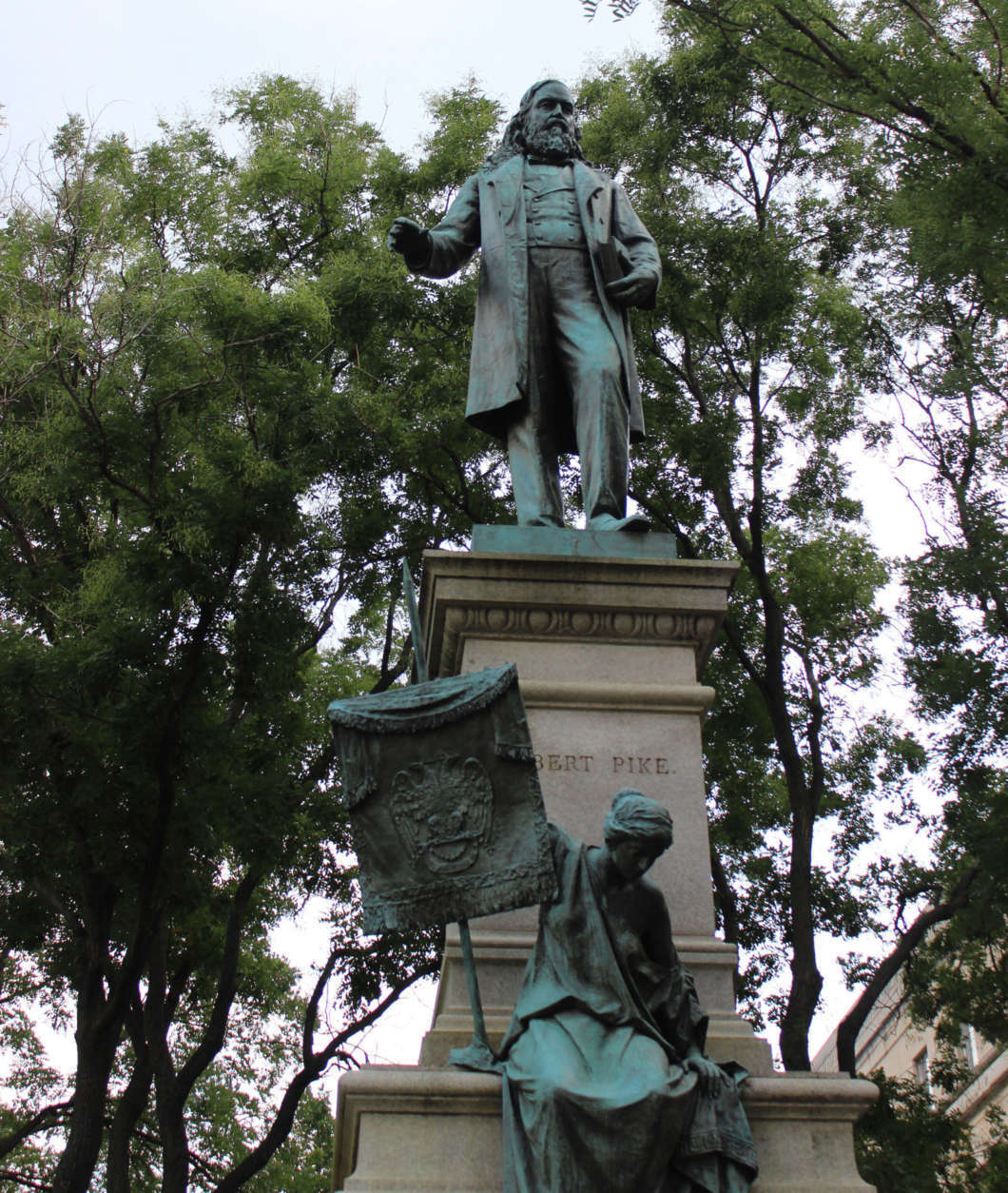
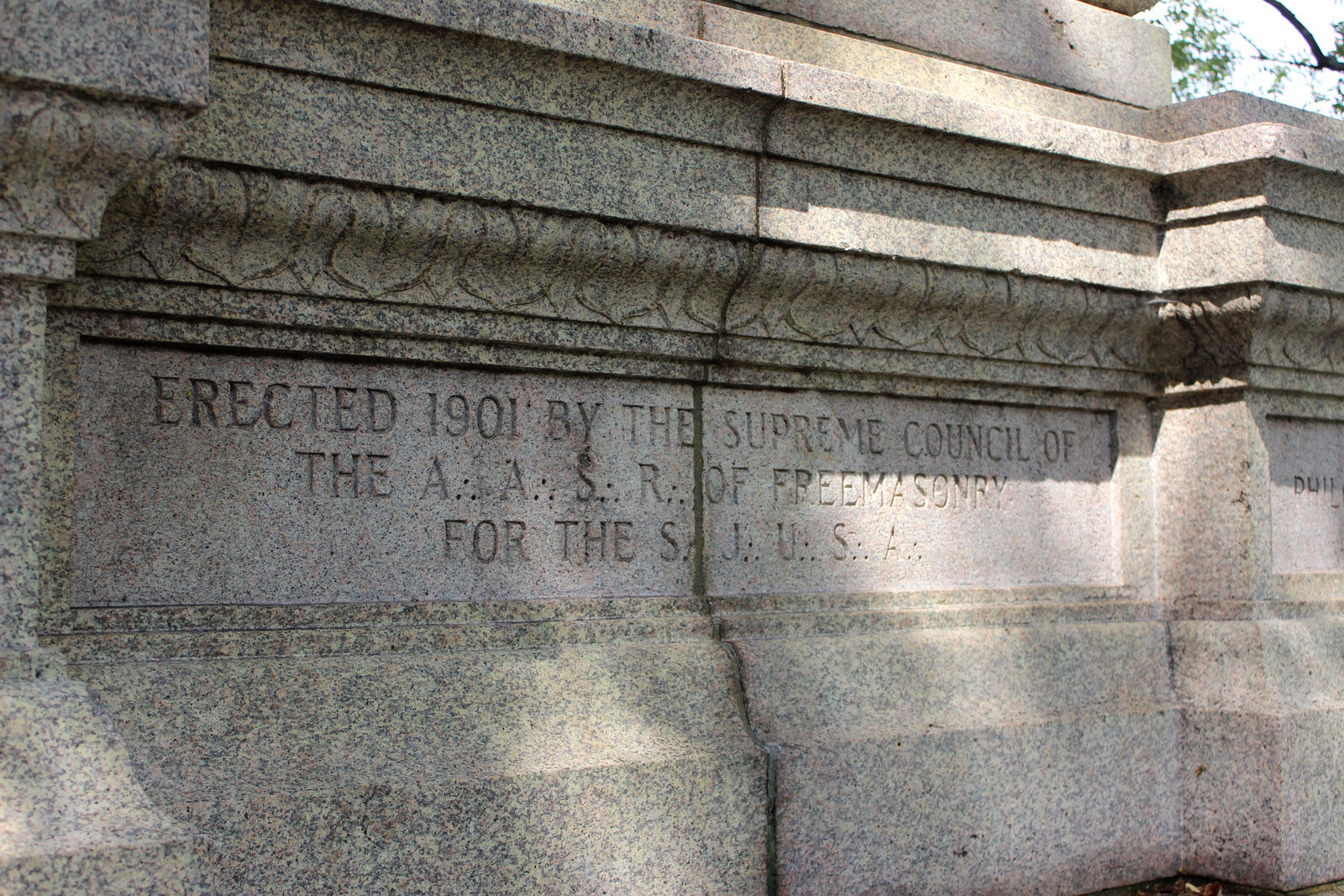
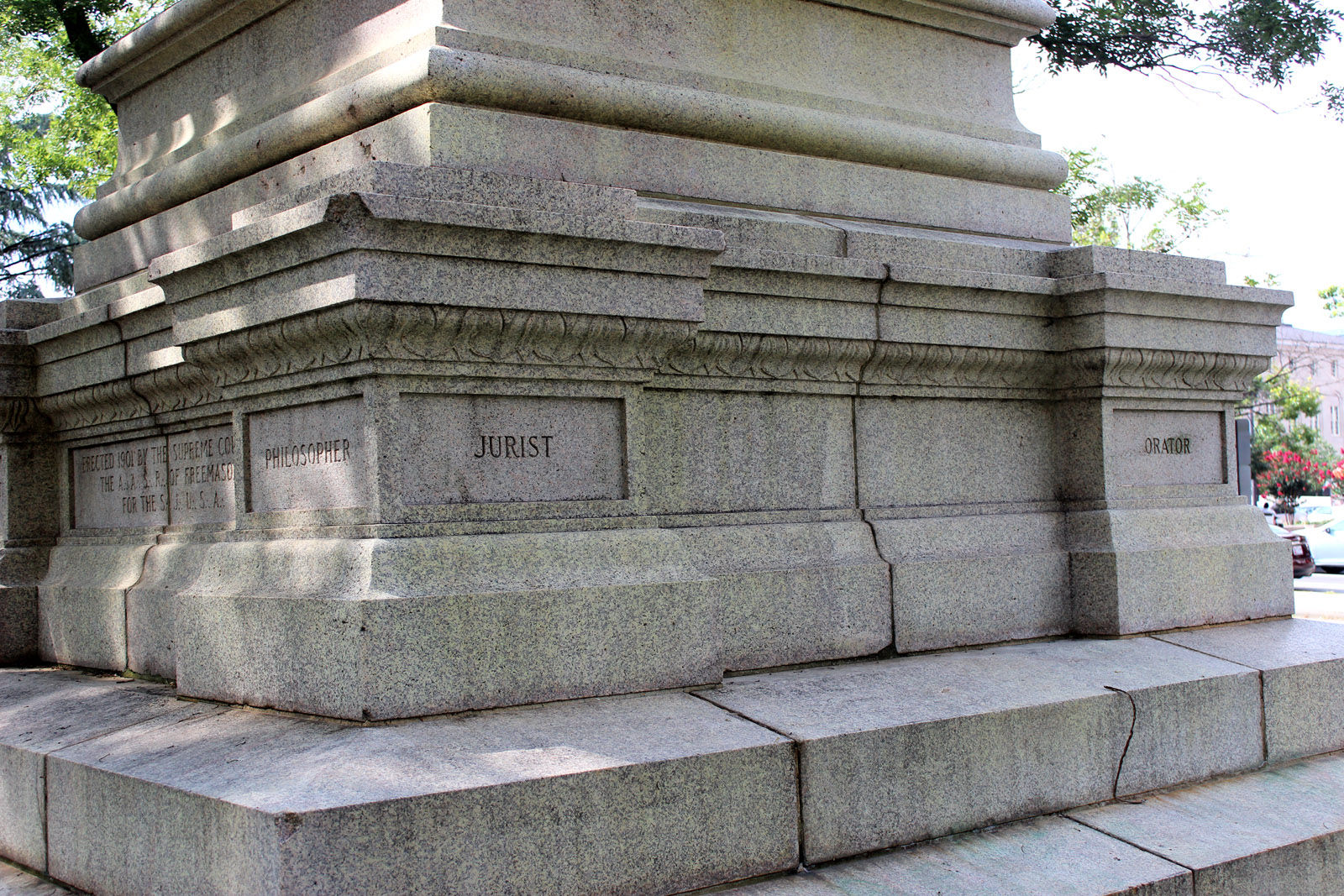
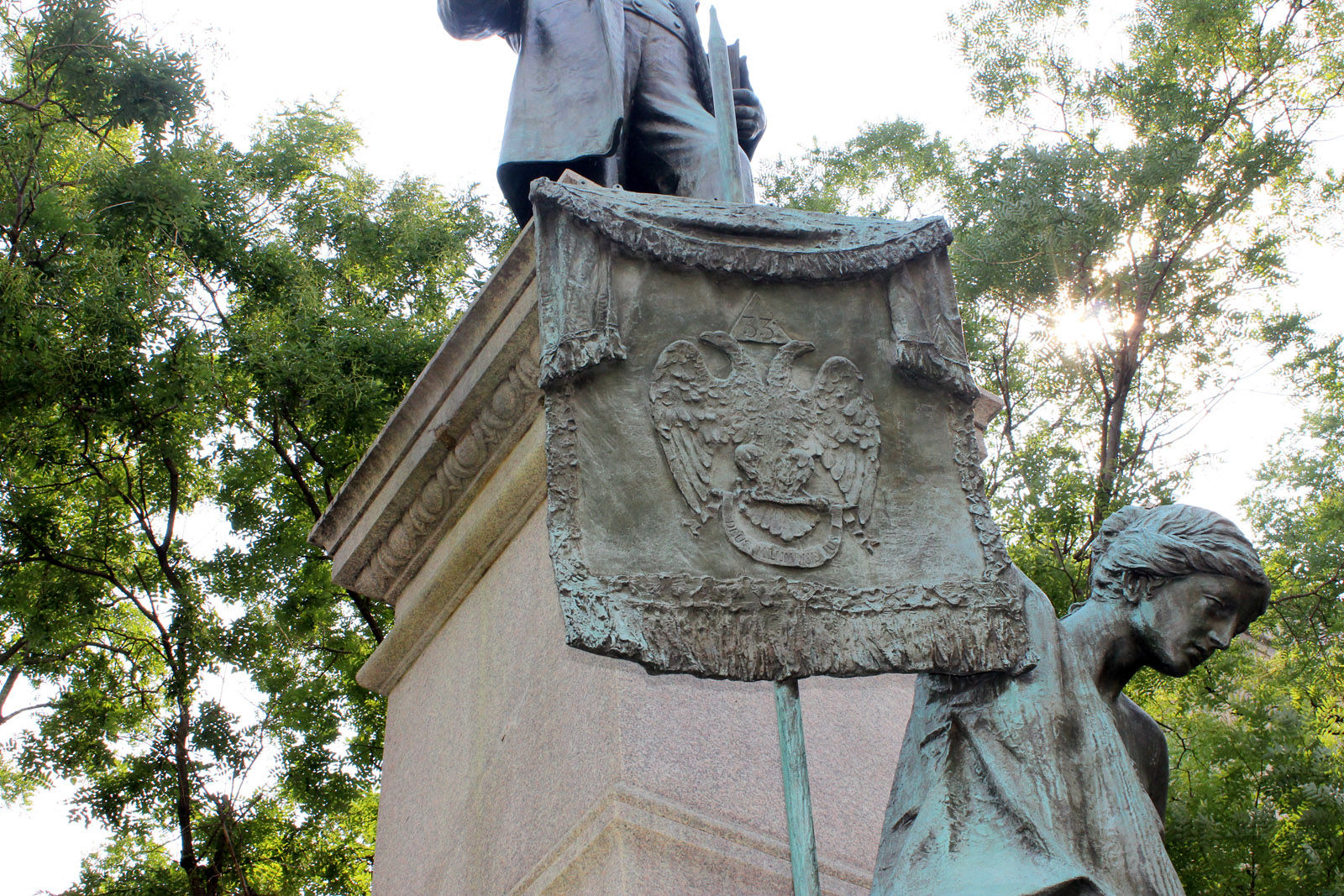
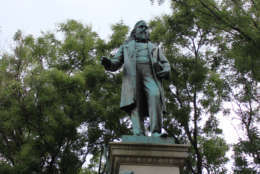
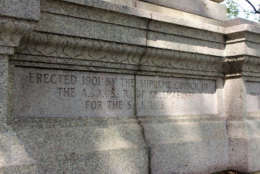
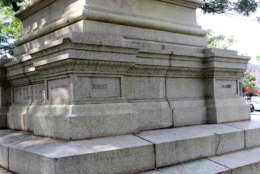
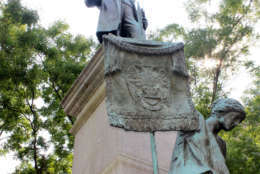
WASHINGTON — As communities throughout the region debate the future of monuments to their Confederate and slaveholding past, not all quite fit the mold.
The memorial to Albert Pike off Judiciary Square in D.C. might be among those landmarks whose symbolism is up for debate.
“It’s not exactly the same kind of statue as these Confederate soldiers that people are up in arms about. It’s not in your face in the same way,” said Jane Levey, chief historian with the Historical Society of Washington D.C.
Pike’s statue, erected by an 1898 act of Congress, depicts the former leader of the Scottish Rite as a civic leader holding a book he wrote compiling the guiding philosophies of the Freemasons. One panel around the base of the statue mentions his role as a soldier — he served as a brigadier general in the Confederate Army during the Civil War.
Among his other pursuits listed are poet, orator, jurist and philanthropist.
In the wake of the violence in Charlottesville, the statue has spurred protests — the most recent on Friday morning. Protesters hung a banner calling members of the Trump administration modern-day Confederates.
And D.C. officials, led by Councilmember David Grosso, have called for the statue’s removal saying it does not reflect the values of the District in 2017.
Eleanor Holmes Norton, the District’s delegate to Congress, suggested in a statement that the statue be sent to Arkansas, where Pike once lived.
“I think that people have misunderstood the intent of that statue,” said Arturo de Hoyos, grand archivist for the Scottish Rite in D.C.
The Scottish Rite is the largest branch of Freemasonry in the world. And the regional headquarters for the southern half of the United States is based on 16th Street at the House of the Temple, where Pike is interred.
His statue, erected at the dawn of the 20th Century by the Scottish Rite, celebrates his contributions to Freemasonry and his life as a civilian after the war, de Hoyos said.
Still, the organization will support whatever decision is made regarding the statue’s future, he said.
“We certainly don’t want a monument, which was really placed there to honor the fraternity, to be a divisive point within the community on racial matters,” de Hoyos said.
De Hoyos described Pike as a “man of his times,” who was known to abandon ideas and views over the course of his life. That included his views on slavery and he later developed a friendship with a leader of Prince Hall, a black Freemason society.
“Before and during the Civil War, he accepted slavery as a social institution …. He was a person who actually looked forward to a time when slaves would be free men,” de Hoyos said.
Levey paints a different view of Pike, whom she noted was originally from Massachusetts, not a native southerner.
“He was an avowed racist. He did join the Confederacy and was a general. That’s a pretty strong statement,” she said.
“It’s just kind of shocking, to us today, that this statue ended up in Judiciary Square. But he was considered an important man of the time,” she said.
Also setting Pike’s monument apart is that it predated the later wave of Confederate statues that were installed throughout southern states as part of what Levey called a public-relations campaign by white supremacists intended to support segregation.
Grosso’s office said that he’s waiting for a response from the National Park Service. He intends to introduce a resolution in support of removing the statute when the Council returns in September.
In the meantime, some council members have already begun discussing what should go in its place, said Matt Nocella, spokesman for Grosso.
The Pike statue lies on a patch of federal property between the Metropolitan Police Department and the U.S. Department of Labor. Two members of Congress, both Freemasons, sought Congressional approval to erect the monument in 1898 — a time when the federal government ran the District.
Park Service spokesman Mike Litterst said that the request is being reviewed and the park service is working to determine which agency would be responsible for the monument’s removal.
WTOP’s Megan Cloherty contributed to this report.


